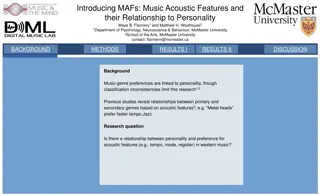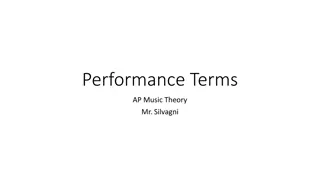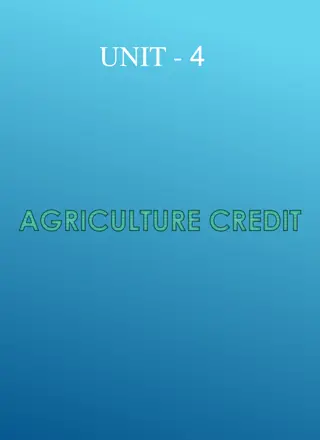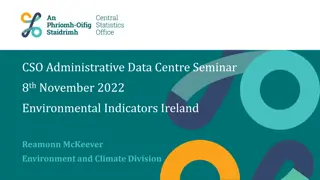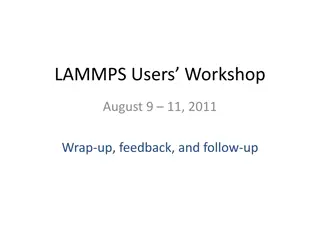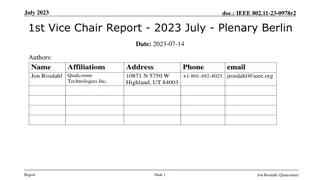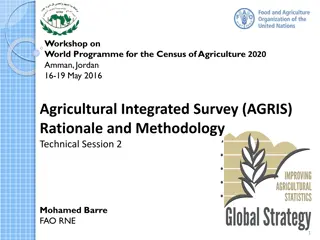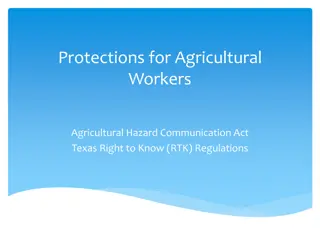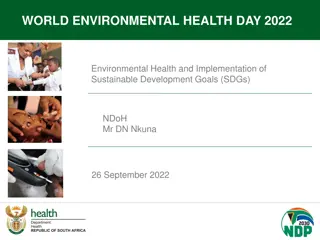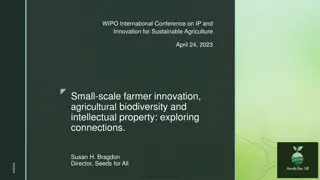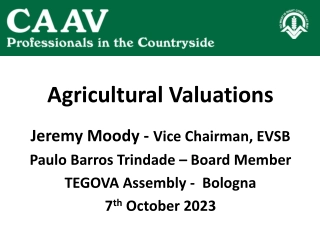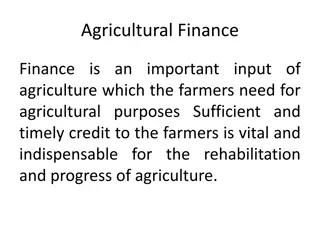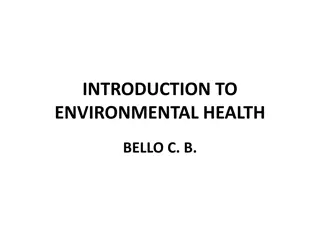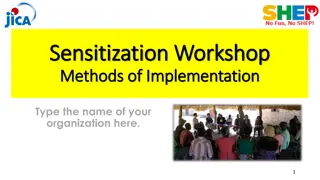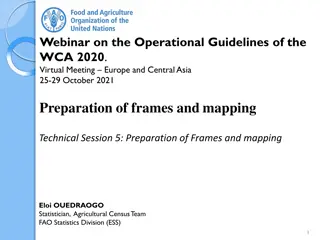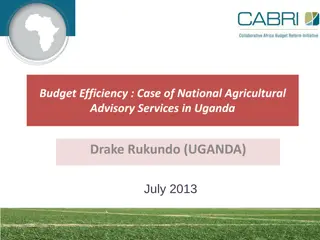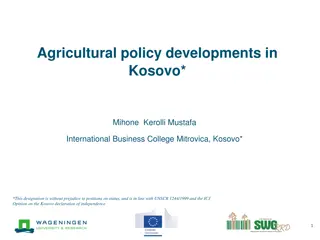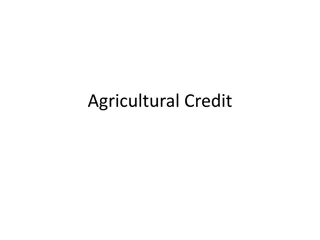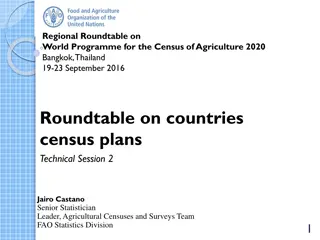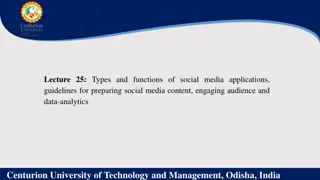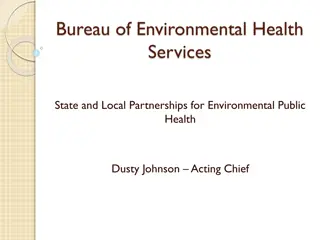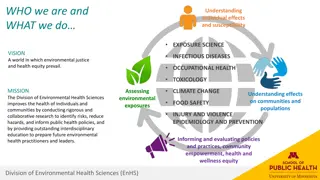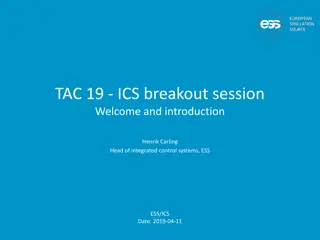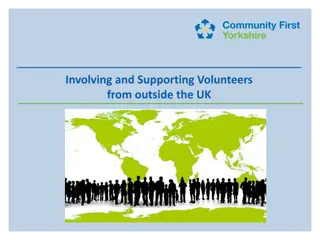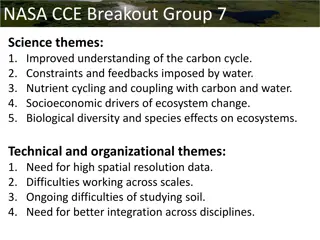Report on Health, Agricultural, and Environmental Breakout at 1st TEMPO Applications Workshop
This report highlights the potential applications of TEMPO data for addressing gas phase pollutants like NO2, SO2, and O3 impacting human health and agriculture. It discusses the need for improved spatial coverage and data latency, as well as potential collaborations with key partners like CDC, USDA, EPA, and WHO to utilize NASA satellite data for various research and projects.
Download Presentation

Please find below an Image/Link to download the presentation.
The content on the website is provided AS IS for your information and personal use only. It may not be sold, licensed, or shared on other websites without obtaining consent from the author. Download presentation by click this link. If you encounter any issues during the download, it is possible that the publisher has removed the file from their server.
E N D
Presentation Transcript
Health, Agricultural, and Environmental Breakout Report 1stTEMPO Applications Workshop Huntsville, AL
Question 1: TEMPO will provide first of its kind temporal (1 hourly) and spatial (2-km pixel width in north-south; 4.5-km pixel length in east-west) resolution with limited data latencies allowing for the community to continue existing applications and facilitate new ones. What are the discipline or focus area science questions or application challenges that can be addressed with TEMPO data? Gas phase pollutants (NO2, SO2, O3) are a concern for human health Not really a good way to get spatial coverage Health data is characterized by zip code (couple of square kilometers) Need 8hr or 1hr average data (TEMPOs lack of nighttime coverage could be a concern for something like NO2) Want potential of PM2.5applications Good for case study applications, determine source locations Health studies for respiration Agriculture studies with O3and NO2
Question 2: There are a number of current in situ and remotely sensed data that measure atmospheric constituents, such as tropospheric ozone (O3), nitrogen dioxide (NO2), aerosols, and other trace pollutants (formaldehyde [H2CO], glyoxal [C2H2O2], and sulfur dioxide [SO2]). Which instruments/observations do you currently use for your work? OMI for O3and NO2 MODIS, VIIRS, GOES for aerosols Ground instruments
Question 3: A variety of current and future partners exist in the community. Who are your key partners or end user organizations on tasks, projects, or processes that use NASA satellite data? Who are additional potential users? CDC interested in respiratory health USDA EPA State Departments WHO United Nations Environmental Programs
Question 4: Given what you have learned about TEMPO over the last two days, what additional or higher level data products from TEMPO might be useful in your science or applications tasks? (Include the characteristics of the product and other requirements, e.g. resolution, accuracy, data latency, data format.) Rank them in importance. Merge TEMPO data with meteorological data (i.e. precipitation, temperature data) important for PM or NO2 coming from agriculture Develop tools to merge data Multi-platform retrievals to improve spatial resolution, aerosol retrievals Need to get to river or estuary scale for water/ocean applications Applications are ranked differently depending on the end user application Achilles heel of TEMPO is lack of vertical resolution Have to use some surface assets such as profilers to provide boundary layer vertical information of something such as O3 Have to integrate surface data with satellite information for calibration and validation DISCOVER-AQ finding showed the surface measurement didn t capture the column very well Couldn t understand the dynamical mixing occurring satellite profile is important to understand these types of processes TEMPO needs to plan for dynamic applications vary over time and therefore need to have continued support for product development for end users Cost cap restricts the possibility of more science and data management Need demand to request more funding
Question 5: Within your organization, what are the biggest impediments limiting your use of new satellite data and products? Need to make information relevant to end users needs to be translated so that it is easier to understand (example - how weather forecasts are given to the public, model data translated to forecasts)
Question 6: What data formats (e.g., NetCDF, HDF, GIS-compatible, etc.) do you need for your science or applications tasks? NetCDF is great for modeling community GIS is better for end users or non-scientific community Very easy to display Good for decision support applications GIS is not made for batch jobs, not designed to carry lots of data file size too big Should reformatting be done by TEMPO or through community support? Let community convert data use free converters because GIS data is too cumbersome to store Diverse group of users (government, academic, state level) which makes the need for multiple data formats Format is not as much of a concern, instead how do we get the information out and interpreted Important to have visualizations Need to have a data support liaison to help end users This could maybe be users of the data or part of the TEMPO team Similar to NASA early adopter program Resources greatly limit the ability of TEMPO to help end users Need to have user community put pressure for money for support Need to demonstrate the need and demand Demonstrate use of TEMPO data by next workshop Determine if we can see NO2 pulses coming off agricultural lands after rain Clouds could contaminate data have to wait for clouds to clear Get simulated TEMPO NO2 and O3 for agricultural studies






